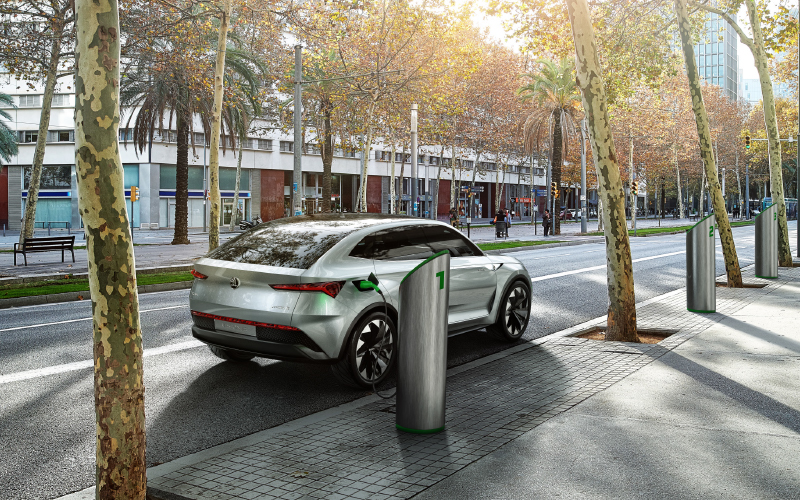In contrast, electric vehicles are quite unobtrusive. Compared to an ordinary car, what gives them away is how suspiciously quiet they are, as usually all you’ll hear is a faint whistle. Otherwise, an electric car works just like an ICE car. Some would say even better than a petrol car. Electric cars are easy to drive (the single-speed transmission consigns manual gear-shifting and the clutch pedal to history), they are completely silent (like today’s top-end limousines), you never have to wait for the engine to engage (maximum torque is available from zero revolutions), and they are more spacious (electric drive is more compact) and easier to maintain (no more hands filthy with oil).
The first ŠKODA electrified models can be yours from next year, when the plug-in hybrid ŠKODA SUPERB PHEV and the fully-electric ŠKODA CITIGO take their bow. In 2020 there are plans to launch a mass-produced version of the VISION E concept, an electric SUV with a range of up to 500 km. The new VISION X concept, cleverly combining a CNG engine with electric drive, was also showcased at this year’s Geneva Motor Show. This hybrid technology could help to make ŠKODA cars even more environmentally friendly. By 2025, ŠKODA will have ten electrified models.
















